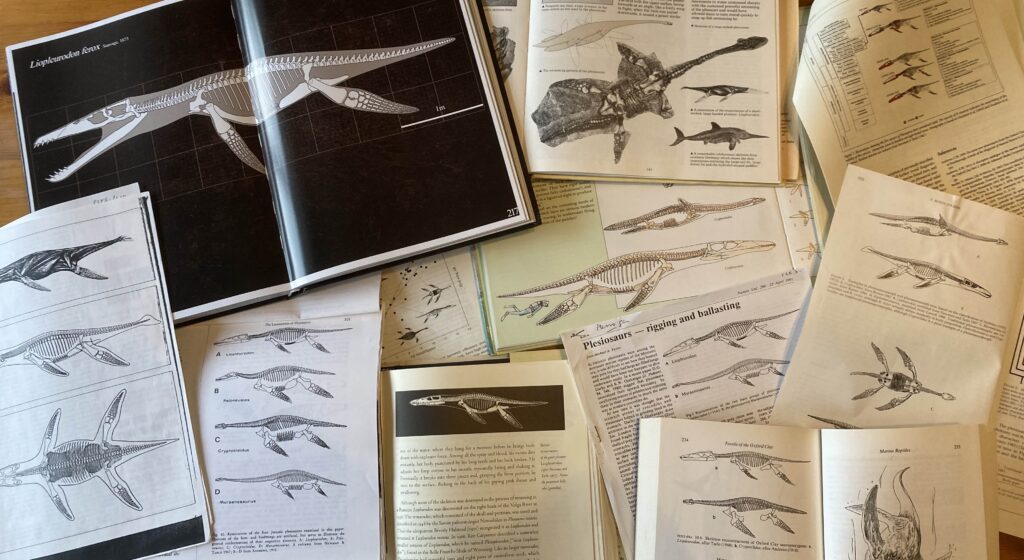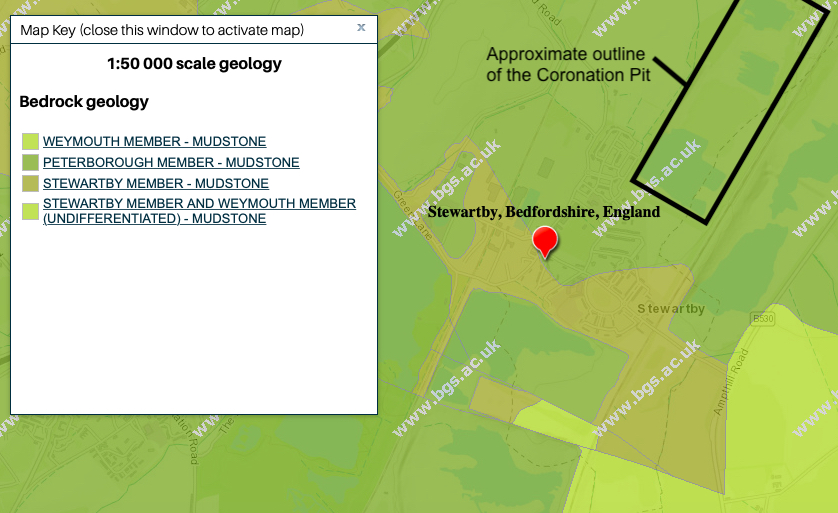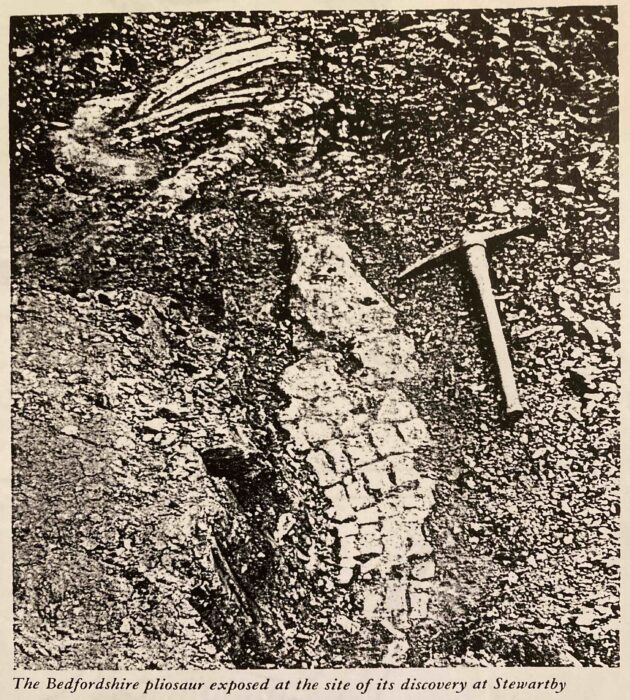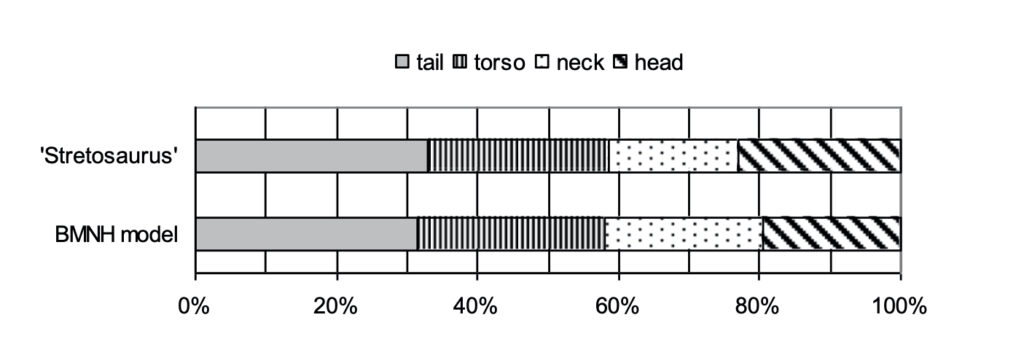The Stewartby Pliosaur and the 1967 Liopleurodon reconstruction
Newman and Tarlo (1967)
In 1967, Barney Newman and Lambert Beverley Tarlo authored a three-page short article in the popular magazine ‘Animals’, a short-lived periodical published weekly by Purnell from 1963 to, at least, 1967… I’m not sure when it eventually fizzled out. Their article entitled “A Giant Marine Reptile From Bedfordshire” provides an account of plesiosaur swimming in the context of a recently discovered pliosaur specimen, the ‘Stewartby Pliosaur’, found in a brick pit in Stewartby, Bedfordshire (Newman and Tarlo 1967). As a popular account the text itself is rather unremarkable. However, the article is best known and most widely cited for the accompanying full-page skeletal and muscular reconstruction of “the pliosaur”. Although Newman and Tarlo (1967) do not allocate the reconstruction to any specific genus or species it has become widely regarded as Liopleurodon. This article explores that contention.

An iconic reconstruction
L. B. Tarlo (who later went by the name of L. B. Halstead) repurposed part of this iconic reconstruction in at least one other publication, captioned as Liopleurodon (Halstead 1982). However, It was apparently Jane Ann Robinson (1975) who first reused the reconstruction under that genus. Robinson (1977) cites a personal communication with Halstead, so they were certainly acquainted with each other by 1977, so it is possible, likely even, that Robinson consulted with Tarlo/Halstead a couple of years earlier when she reused and captioned the reconstruction as Liopleurodon.
Following Robinson (1975), many other authors subsequently reused or redrew the Newman and Tarlo reconstruction under the name of Liopleurodon in academic papers, popular articles, and books, to the point where it has become ubiquitous (Taylor 1981; Carroll 1988; Benton 1990a; Benton 1990b; Martill and Hudson 1991; O’Keefe 2002; Ellis 2003; and Yang 2013 come to mind – I’m sure there are many more). Sometimes the outline of the tail fin was reduced or removed, sometimes the soft tissue outline was removed entirely, sometimes the pliosaur was given extra teeth (the original appears devoid of any maxillary teeth), and sometimes its mouth was redrawn in a open position, but the source is always obvious even when it isn’t directly cited. It is quite understandable that this reconstruction has been reused so frequently and for so long. It was the first published illustration of a full body skeletal reconstruction attributed to Liopleurodon, and has remained the only one for 54 years to the present day. So, what do we really know of the ‘Stewartby Pliosaur’ specimen that inspired this reconstruction, and is it really Liopleurodon?

The ‘Stewartby Pliosaur’
A short account of the ‘Stewartby Pliosaur’ specimen was given by Gilbert (1963) who provided some details of its discovery and excavation in June 1963 and its display by the British Museum later that year at the “annual reunion of the Geologists’ Association held in the Large Hall of Chelsea College of Science and Technology on November 2 [1963]”(p. 1271). Both Gilbert (1963) and Newman and Tarlo (1967) explain that the London Brick Company presented the remains to the British Museum. Indeed, the specimen resides today in the Natural History Museum, London, under the numbers NHMUK PV R 8322a, b, c & d. The NHM’s valuable online data portal provides more information (https://data.nhm.ac.uk/dataset/collection-specimens/resource/05ff2255-c38a-40c9-b657-4ccb55ab2feb?q=PV+R+8322). According to the museum’s accession register the ‘Stewartby Pliosaur’ was discovered in the Coronation Pit at Stewartby. It was officially accessioned into the museum in 1965 under the name Liopleurodon ferox. McHenry (2009) supposed that the specimen was from the Oxford Clay and he was correct. Specifically it is from the Peterborough Member of the Oxford Clay Formation, which is equivalent to the ‘Lower Oxford Clay’. This is mostly Middle Callovian in age – the right age for Liopleurodon ferox. At an estimated 36 feet (10.97 metres) long, this skeleton provides possible evidence for giant Liopleurodon ferox in the Oxford Clay.
There are two determinations for this specimen in the NHM’s data portal. One of the determinations is Liopleurodon ferox but this is an old identification (Hilary Ketchum, personal communication). The most recent determination is attributed to my friend and fellow plesiosaur palaeontologist Dr Hilary Ketchum who regards it more cautiously as an indeterminate pliosaurid (personal communication). [In a previous version of this article I wrongly attributed the Liopeurodon ferox determination to Hilary]. So, there you go, the Newman and Tarlo reconstruction is based on material that was once referred to Liopleurodon ferox, and although the material is too incomplete to be sure, it could be. Ah, if only it were that simple…

The ‘Stewartby Pliosaur’ is a rather incomplete skeleton. This is because “the front half of the reptile had been taken away by the digger before the bones were noticed” (Gilbert 1963, p. 1271). According to Newman and Tarlo (1967, p.61) “The remains consist of the back part of the animal and the front of the head”. More specifically, it consists of a substantially complete and articulated hind limb (which is figured in the article), a pubis, a few ribs and vertebrae, a piece of the snout, and other scrappy bits and pieces. This wasn’t enough to form the basis for the full body reconstruction and Newman and Tarlo (1967) are upfront about this: “From our study of this animal [the ‘Stewartby Pliosaur’] and by comparing it with other giant pliosaur remains, we have been able to reconstruct the skeleton of a typical giant pliosaur” (p. 61). I bolded the parts that make it implicit that 1. the reconstruction is partly based on the ‘Stewartby Pliosaur’, and 2. partly based on other remains.
This raises the question, though, which “other giant pliosaur remains” did inform this reconstruction?

Making sense of the Newman and Tarlo reconstruction
Newman and Tarlo (1967) do not specify which specimens were used in the reconstruction, but other plesiosaur researchers have considered the reconstruction. Noè (2001) regarded the reconstruction as “probably based on the GPIT mounted specimen” (p. 177). That is, the specimen of Liopleurodon ferox in the Geologisch-Paläontologisches Institut Tübingen, Germany. Noè also noted that in the reconstruction “…the orbits and external nares lie far anterior of their true position. Hence, the reconstruction…is not representative of any known specimen attributed to Liopleurodon and is clearly inaccurate” (p. 177). There are other distinct differences between the GPIT specimen and the Newman and Tarlo reconstruction. For example, the propodials (humerus and femur) do not match those in the GPIT skeleton. At ~5 metres long, the specimen also doesn’t fit Newman and Tarlo’s (1967) criterion of “other giant pliosaur remains”. So, while the GPIT skeleton may have been consulted for general proportions, overall I think it unlikely the Newman and Tarlo reconstruction was based directly on this specimen.

McHenry (2009) suggested that the reconstruction “may have been based upon Stretosaurus Tarlo, 1959″ (p.258) and added that “From vertebral counts of the different body segments and general proportions of the skull it undoubtedly represents a large pliosaurid, perhaps ‘Stretosaurus’ (Pliosaurus macromerus)” (p. 370). McHenry also noted that “Tarlo… seemed to imply that the reconstruction was partly based upon the Stretham specimen…”(p.359), and subsequently refers to the reconstruction as the “‘Newman and Tarlo Stretosaurus‘ reconstruction, or the ‘Stretosaurus’ reconstruction” (e.g. p. 370) and says the reconstruction is “apparently based upon the Stewartby and Stretham specimens” (p. 370). I’ve bolded key parts to highlight that there’s no direct evidence for this assertion – not that I disagree with it.
Under this scenario the reconstruction would actually be a composite of two different taxa, since the ‘Stewartby Pliosaur’ is Liopleurodon ferox from the Oxford Clay Formation, while the ‘Stretham Pliosaur’ specimen (OXFUM J.35990) is not…
The ‘Stretham Pliosaur’ – ‘Stretosaurus‘
The full and complicated story of the ‘Stretham Pliosaur’ specimen (OXFUM J.35990) is one for another day, but in short it is a substantially complete pliosaur from the Kimmeridge Clay, named ‘Stretosaurus‘ macromerus by Tarlo (1959) and later reattributed by him (Halstead, 1989) to Liopleurodon macromerus. The Stretham skeleton was retained as the lectotype of Pliosaurus macromerus by Knutsen (2012) but referred to Pliosaurus cf. kevani by Benson et al. (2013) – either way, it is Pliosaurus, not Liopleurodon.
Halstead knew the validity of ‘Stretosaurus‘ was questionable much earlier than his formal declaration and reallocation of the genus to Liopleurodon in 1989. As early as 1977, in collaboration with Robinson, he had re-evaluated the diagnostic scapula of ‘Stretosaurus‘ as an ilium (Robinson 1977), so the genus ‘Stretosaurus’ was already called into question by then. The last publication I can find where Tarlo/Halstead refers to ‘Stretosaurus’ as a valid taxon is in 1971 (Halstead 1971). So, perhaps he (and Robinson?) came to the conclusion that ‘Stretosaurus‘ was Liopleurodon sometime between 1971 and 1977. If so, and if the reconstruction was partly based on the ‘Stretham Pliosaur’, this could explain Robinson (1975) attributing the reconstruction to Liopleurodon.
We know Halstead attributed the reconstruction to Liopleurodon in 1982 (Halstead 1982), so we can be reasonably confident the reconstruction was based on material regarded by him as Liopleurodon at that time, which would have included the lectotype of ‘Stretosaurus‘. It would also make sense for Tarlo to use the ‘Stretham Pliosaur’ specimen in the Newman and Tarlo reconstruction for two other reasons. First, he described and was intimately familiar with it (Tarlo 1957, Tarlo 1959, Tarlo 1960), and second, in Tarlo’s words, “The Streatham specimen is one of the most important Pliosaur[sic] skeletons to have come out of the Kimeridge [sic][and]…most of the post-cranial skeleton can be described” (Tarlo 1959, p. 41). And, of course, the specimen certainly fulfils the criterion of “other giant pliosaur remains” as stipulated by Newman and Tarlo.
I agree with McHenry that the reconstruction may have been based on the ‘Stewartby Pliosaur’ supplemented with information from other pliosaurs, possibly the lectotype of ‘Stretosaurus’. But it is misleading to call the reconstruction ‘Stretosaurus‘, especially since significant portions of the Newman and Tarlo reconstruction are implicitly based on Liopleurodon ferox (The ‘Stewartby Pliosaur’). To my eye the hind limb in the reconstruction does resemble the ‘Stewartby Pliosaur’ (from what is visible in the photograph) more than the ‘Stretham Pliosaur’.
A PLIOSAUR (LIOPLEURODON)
As an aside, it seems to me highly likely that the BMNH (now NHM) Invicta model of “A PLIOSAUR (LIOPLEURODON)” was also influenced by, if not directly based on the Newman and Tarlo reconstruction. As the only published visual reference for (at the time) Liopleurodon what else would the toy be based on? The general body shape and proportions are similar, as McHenry (2009) has demonstrated, and even though the BMNH model has a slightly longer neck and shorter head, such variation is within the realm of artistic licence, as is the omission of the tail fin. This is, of course, more idle speculation. But, look at it.


Liopleurodos and don’ts
So, can we be sure what fossil material formed the basis for the Newman and Tarlo reconstruction? Nope, not completely. We do know the reconstruction represents a mishmash of unspecified specimens/taxa, and it is implicitly based partly on Liopleurodon ferox (the ‘Stewartby Pliosaur’ NHMUK PV R 8322a, b, c & d), including the hind limbs. However, the rest of the skeleton may be based on Pliosaurus macromerus/cf. kevani, (the ‘Streatham Pliosaur’ OXFUM J.35990), and/or possibly other specimens as well. I did begin to try and compare the various photographs and figures of pliosaurids described by Tarlo with the reconstruction, to see if there are any matches, but details are lacking in the reconstruction and the figures in Tarlo’s papers are often thin on the ground or simplified. So, that’s a project for another time, perhaps. I’m sure there’s more to discover.
For now, I think Newman and Tarlo got it right in the first place when they described the reconstruction as a “typical giant pliosaur”, in the sense of “general” or “non-specific”. I suspect they purposefully avoided attaching a genus name to it in 1967 because they knew it was a composite reconstruction. Going forward I’ll settle for calling it “A PLIOSAUR” and I’m off now to remove the reconstruction from the Plesiosaur Directory’s Liopleurodon ferox page, where it has been nestled comfortably for several years. All those books and papers that call it Liopleurodon though, they’re going nowhere!
References
Benson, R.B.J.; Evans, M; Smith, A.S.; Sassoon, J.; Moore-Faye S.; Ketchum, H.F. and Forrest, R. 2013. A Giant Pliosaurid Skull from the Late Jurassic of England. PLoS ONE 8(5): e65989. https://doi.org/10.1371/journal.pone.0065989
Benton, M. J. 1990a. The reign of the reptiles. Kingfisher, London, 143 pp.
Benton, M. J. 1990b. Vertebrate palaeontology. Unwin Hyman, London, 377 pp.
Carroll, R. L. 1988. Vertebrate Paleontology and Evolution. Freeman, New York, 698pp.
Ellis, R. 2003. Sea dragons – predators of the prehistoric oceans. University Press of Kansas, 313 pp.
Gilbert, J. L. 1963. The Geologists’ Association. Nature, 200(4913), 1271–1272.
Halstead, L. B. 1971. Liopleurodon rossicus (Novozhilov) – a pliosaur from the Lower Volgian of the Moscow Basin. Palaeontology, 14, 566-571.
Halstead, L. B. 1982. Hunting the past. Book Club Associates, London, 208pp.
Halstead, L. B. 1989. Plesiosaur locomotion. Journal of the Geological Society London, 146, 37-40.
Knutsen, E. M. 2012. A taxonomic revision of the genus Pliosaurus (Owen, 1841a) Owen, 1841b. Norwegian Journal of Geology, 92, 259–276.
Martill, D. M. and Hudson, J. D. (eds.). 1991. Fossils of the Oxford Clay. The Palaeontological Association. Dorset Press, Dorset, 286 pp.
McHenry, C. R. 2009. Devourer of Gods: the palaeoecology of the Cretaceous pliosaur Kronosaurus queenslandicus. Unpublished PhD thesis, University of Newcastle.
Newman, B. and Tarlo, L. B. 1967. A giant marine reptile from Bedfordshire. Animals, 10(2), 61–63.
Noè, L. F. 2001. A taxonomic and functional study of the Callovian (Middle Jurassic) Pliosauroidea (Reptilia, Sauropterygia). Unpublished PhD thesis, University of Derby.
O’Keefe, F. R. 2002. The evolution of plesiosaur and pliosaur morphotypes in the Plesiosauria (Reptilia: Sauropterygia). Palaeobiology, 28(1), 101-112.
Robinson, J, A. 1975. The locomotion of plesiosaurs. Neues Jahrbuch für Geologie un Paläontologie – Abhandlungen, 149, 286–332.
Robinson, J. A. 1977. Intracorporal force transmission in plesiosaurs. Neues Jahrbuch für Geologie un Paläontologie – Abhandlungen, 153, 86–128.
Tarlo, L. B. 1957. The scapula of Pliosaurus macromerus Phillips. Palaeontology, 1(3), 193–199.
Tarlo, L. B. 1959. Stretosaurus gen. nov., a giant pliosaur from the Kimmeridge Clay. Palaeontology, 2, 39-55.
Tarlo, L. B. 1960. A review of the Upper Jurassic pliosaurs. British Museum (Natural History), Geology, 4, 145–189.
Taylor, M. A. 1981. Plesiosaurs – rigging and ballasting. Nature, 290, 628–629.
Yang, Y. A pictorial guide to palaeontology – prehistoric aquatic reptiles. Peking Natural Science Organisation, 304 pp.

The Stewartby Pliosaur right fins are 7.6 ft long,the femur is about a 960mm long(maybe)?Anyway,Its true total length should be 9-10 meters long.